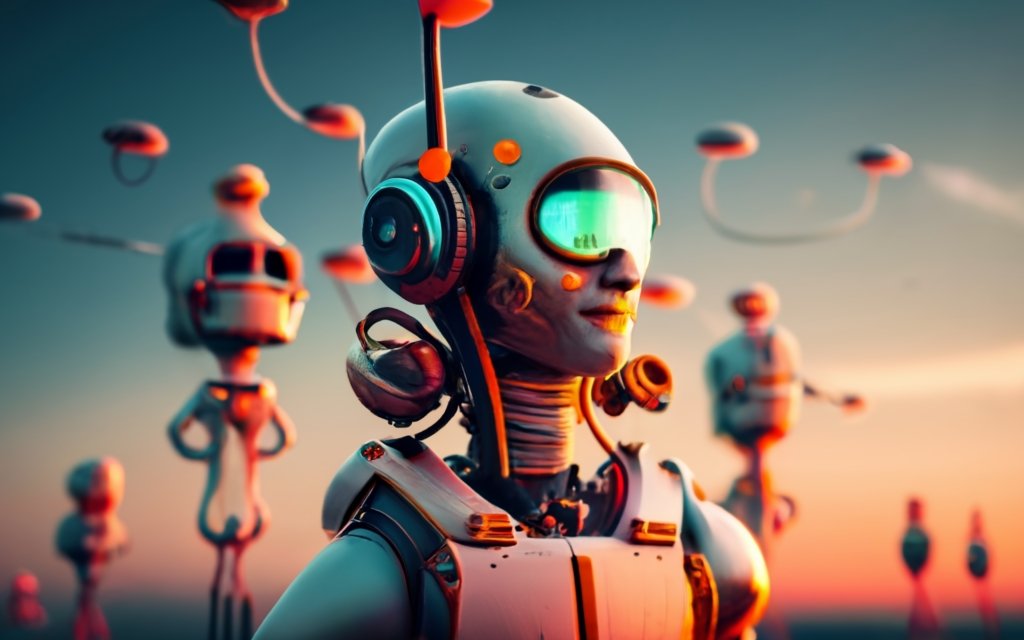Content marketers are increasingly turning to AI tools to produce quality content quickly. However, with the rise of AI-generated content, it becomes imperative to ensure that their content is original and not AI-created. Free AI content detectors have emerged as a popular solution, offering an AI detection score to determine the originality of your content. These detector tools, including Google Chrome extensions, are great tools for content creators to verify whether the content was copied or generated by AI. As AI technology continues to advance, using a free AI detector becomes essential for any team of content marketing professionals to maintain the accuracy and originality of their content, making sure your content stands out in a sea of AI-written and AI-generated content.
What is AI content detector?
An AI content detector is a tool designed to discern whether the content was written by AI or by a human. These advanced AI detectors are increasingly vital as AI writing tools become more prevalent. The core function of these detectors is to analyze textual content and determine if it’s AI-generated content or original human-written content. This distinction is crucial for maintaining content integrity and ensuring that your content is unique.
How does AI detection tool work?
AI detection tools operate by analyzing patterns typical of AI writing, such as certain phrasings or structures often found in AI-generated content. These tools use advanced algorithms and AI models to detect if the content was produced by generative AI technologies. They assess various aspects of the text, including style and complexity, to provide an accurate detection score, indicating the likelihood of the content being AI-created.
What is Originality.ai AI detector and plagiarism checker?
Originality.ai is a combination of an AI detection and plagiarism checking tool. It offers a comprehensive solution for content creators who need to ensure the originality of their content. The tool not only checks for plagiarized content but also has AI detection capabilities to determine if a piece of content was written by AI. This dual functionality makes it a reliable tool for maintaining the authenticity of written content.

Should content publishers use plagiarism detector in AI content detection?
Content publishers should indeed use a plagiarism detector alongside AI content detection tools. This approach ensures comprehensive content analysis, verifying both the originality and the uniqueness of the content. Plagiarism detection tools are essential in content operations, as they help in ensuring that content is not only free from AI influence but also not copied from existing sources.
What is best AI detect AI-generated content – Copyleaks or Originality AI
Determining the best AI to detect AI-generated content depends on specific needs. Copyleaks offers robust text generation detection, while Originality AI provides a combined plagiarism checker and AI detection. Both offer accurate detection, but Originality AI might be more suitable for those who need an all-in-one solution for plagiarism and AI detection.
Is original content always human content or best AI content works?
Original content is not always synonymous with human-written content. In some cases, AI writing can produce high-quality content that is both original and valuable. However, ensuring the content’s originality and quality remains a priority, whether it’s written by AI or humans. AI is an excellent tool for content creation, but it’s crucial to maintain a balance and ensure content integrity.
What are best tools or AI content detection solutions for content and plagiarism
The best tools for AI content detection and plagiarism include Originality AI, Copyleaks, and various chrome extensions like the AI content detection Chrome extension. These tools are great for content creators, especially those managing large volumes of content. They offer options for AI detection, plagiarism checking, and ensuring the quality and originality of content at scale.
Our expert Danny on AI content
Let’s talk about AI, shall we? It’s like having a super-smart parrot in the room. It repeats, it dazzles, but ask it to explain the meaning of life, and it’s back to squawking about crackers. The use of AI in content creation? Oh, it’s a hoot! AI created content is like a magician pulling a rabbit out of a hat, except the rabbit is also made of hats. It’s impressive, sure, but you can’t help wondering, ‘Where are the real rabbits? How to use the AI?’
Now, detecting AI in content is a bit like playing a game of ‘Spot the Robot’ at a very sophisticated costume party. You think you’ve found one, but no, it’s just Kevin from accounting with a really shiny suit. Detect AI in writing? It’s like trying to find a needle in a stack of needles – they all look sharp, but some are just a bit too perfect, you know? The funny thing is, we’re teaching these AI tools to be more human, but not to pass the Turing test – more like to pass a high school English exam. And they’re getting good at it, too.
Sometimes I read an AI-generated article and think, ‘Wow, this AI has a better grasp of grammar than most people I know.’ But then it goes off on a tangent about how to bake a cake during a discussion on quantum physics, and the illusion is shattered. But here’s the kicker – as much as we poke fun at AI, it’s changing the game. It’s like that quiet child in class who you never notice until they win the science fair with a volcano that actually erupts real lava, inspired by a trip to Mount Etna on a Puglia kids trip. Suddenly, everyone’s paying attention.
In the end, AI in content creation is a bit like pineapple on pizza – some people love it, some people hate it, but everyone’s talking about it. And just like that controversial pizza topping, AI isn’t going anywhere. It might not be the secret sauce to perfect content, but it’s certainly adding some flavor to the mix. So, let’s embrace the chaos, enjoy the ride, and maybe, just maybe, learn a thing or two from our algorithmic amigos.
FAQ on AI generated content written by Tools
- What is AI-generated content and how is it different from human-written content? AI-generated content is produced using popular AI tools like ChatGPT, which use advanced algorithms to create text. This AI text differs from human-written content in its style and construction, often reflecting the vast data AI has been trained on.
- How can I detect whether content is AI-written or created by a human? To detect AI-written content, you can use AI detection tools that analyze the text’s structure and style. These tools are designed to differentiate between content produced by AI and that written by a human.
- Is AI-generated content considered plagiarism? AI-generated content is not inherently plagiaristic, but it’s important to use AI responsibly. AI and plagiarism concerns arise when AI-created content closely mimics or replicates existing copyrighted material without proper attribution.
- Can AI tools like ChatGPT produce original content? Yes, AI tools like ChatGPT can produce original content. ChatGPT, a popular AI, is a powerful tool capable of generating unique text based on the input and parameters given to it.
- How accurate are detectors in identifying AI-generated text? The accuracy of the detector for AI-generated text varies, but many are quite sophisticated. They analyze patterns and nuances in the text to detect whether the content is AI-created with a high degree of accuracy. Originality AI detector is pretty good for that!
- Should I use AI to create content for my website or blog? The use of AI, like ChatGPT, to create content can be beneficial, especially for generating ideas or drafting initial content. However, it’s important to review and personalize AI-generated content to ensure it aligns with your brand voice and goals.
- How does ChatGPT ensure the originality of the content it generates? ChatGPT, when generating content, draws from a vast dataset to produce unique responses. While it doesn’t ‘ensure’ originality in the strictest sense, the vastness of its training data and its generative capabilities typically result in original output. However, it’s always advisable to check the content for uniqueness.
